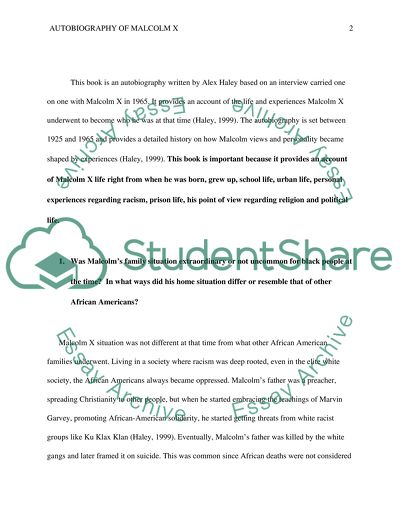Cite this document
(Analysis of Autobiography of Malcolm X Book by Alex Haley Report/Review - 1, n.d.)
Analysis of Autobiography of Malcolm X Book by Alex Haley Report/Review - 1. Retrieved from https://studentshare.org/biographies/1608913-book-report
Analysis of Autobiography of Malcolm X Book by Alex Haley Report/Review - 1. Retrieved from https://studentshare.org/biographies/1608913-book-report
(Analysis of Autobiography of Malcolm X Book by Alex Haley Report/Review - 1)
Analysis of Autobiography of Malcolm X Book by Alex Haley Report/Review - 1. https://studentshare.org/biographies/1608913-book-report.
Analysis of Autobiography of Malcolm X Book by Alex Haley Report/Review - 1. https://studentshare.org/biographies/1608913-book-report.
“Analysis of Autobiography of Malcolm X Book by Alex Haley Report/Review - 1”, n.d. https://studentshare.org/biographies/1608913-book-report.


